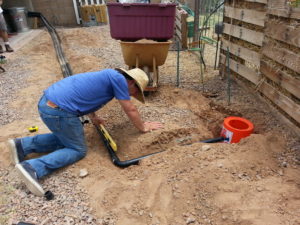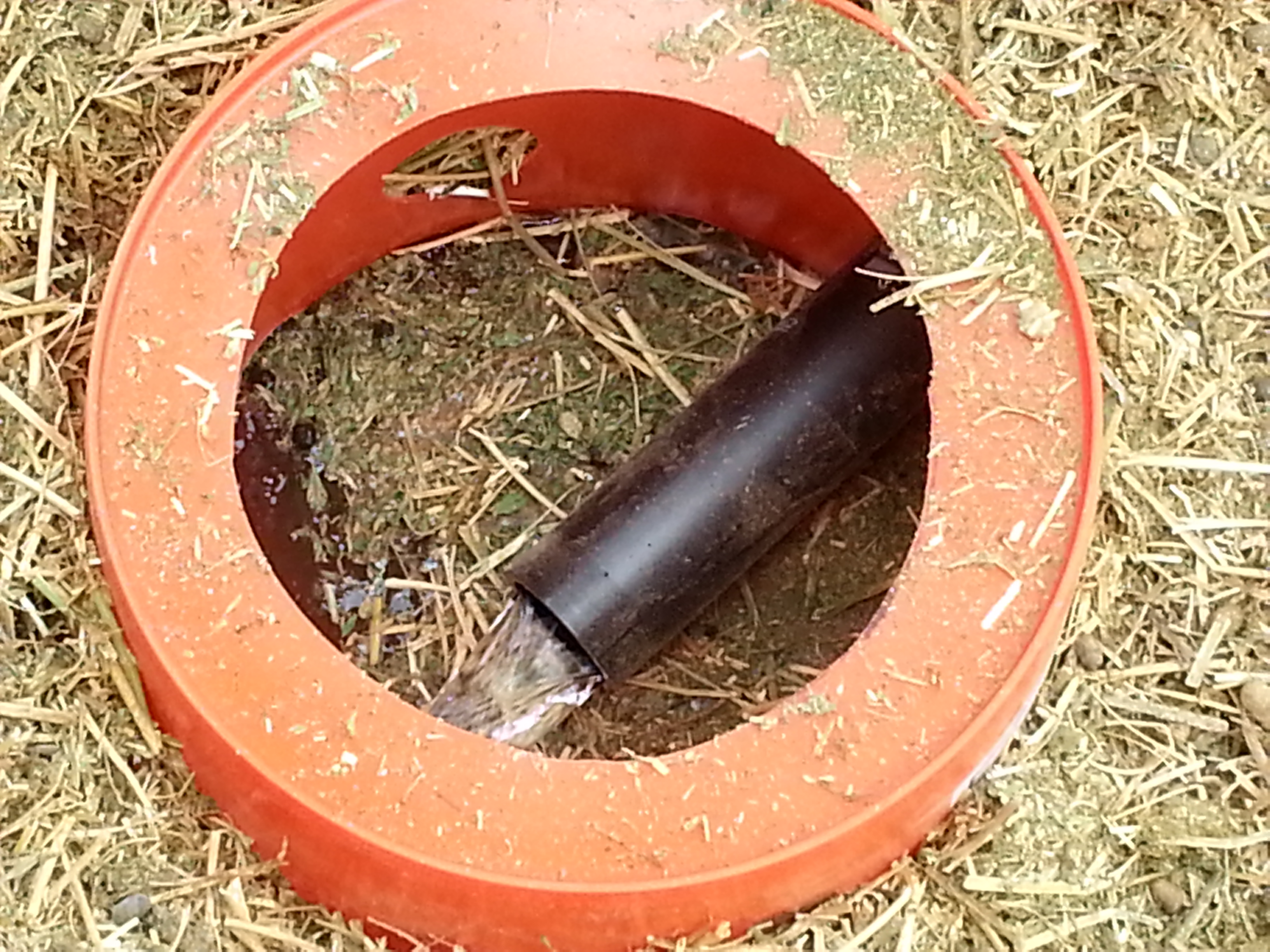Although swales are primarily a passive water harvesting tool that is implemented in dry climates, they can also be used to reduce flooding and erosion in wet climates. Swales direct the flow of storm water, reducing how quickly it spreads and sinking it back into the soil. They can also direct water into a dry well (aka sump pit) or a garden bed. Additionally, they are useful on sloped properties to direct runoff water, preventing the formation of gullies and nutrient loss due to erosion.
The video below is my friend and fellow gardener Jake Mace’s tutorial for directing storm water to a dry well that disperses it to trees in his landscape.


 Similarly, we installed a laundry-to-landscape grey water system in our landscape to reuse wash water. The system directs water to three zones, each ending in a small dry well created by a five-gallon bucket drilled with two-inch holes to disperse the water into the soil. It is important to move the water via gravity down a slope rather than relying on the washing machine pump to push the water to the landscape. Though it is a different application than directing storm water, the basic principles are the same: redirecting water using land forms or gravity and sinking it into the soil.
Similarly, we installed a laundry-to-landscape grey water system in our landscape to reuse wash water. The system directs water to three zones, each ending in a small dry well created by a five-gallon bucket drilled with two-inch holes to disperse the water into the soil. It is important to move the water via gravity down a slope rather than relying on the washing machine pump to push the water to the landscape. Though it is a different application than directing storm water, the basic principles are the same: redirecting water using land forms or gravity and sinking it into the soil.
More resources:
How to Install a Sump Pump Drywell, This Old House (includes a video demonstration and written instructions)
Laundry to Landscape Grey Water System, Art Ludwig, Oasis Design
Making Swales Part 6 and Part 7, Integral Permaculture
Garden Tips: Too Much Water?, ACS Distance Education
How to Construct a Swale in a Residential Landscape, Tenth Acre Farm
What is a Swale and Why You Need One, Tenth Acre Farm
6 Tips for Landscaping a Storm-Proof Yard, American Institute of Building Design
How to Build a Grassy Drainage Swale, Bob Jackson, Handyman How To
How to Find the Slope for a French Drain, Easy Digging

